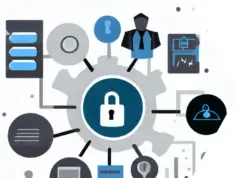The rapid evolution of technology has profoundly impacted how children interact with the digital world. Today’s generation is growing up in an environment where digital devices and internet connectivity are ubiquitous, making digital literacy an essential skill. Unlike previous generations, children now have access to an endless stream of information and various interactive platforms from a very young age. This new digital landscape offers immense opportunities for learning and development but also presents significant challenges that must be navigated with care. In this context, digital literacy becomes a crucial component of a child’s education, equipping them with the skills to safely and effectively navigate the digital world.
The Need for Digital Literacy Education
In the era of smartphones, tablets, and online education, technology has become integral to children’s lives. This constant exposure to technology from a young age underscores the need for comprehensive digital literacy education. Such education is about teaching children how to use technology and guiding them to understand, critique, and use digital information responsibly. The digital world, while resourceful, is fraught with risks such as misinformation, cyberbullying, and privacy breaches. Digital literacy education should focus on developing critical thinking, ethical understanding, and an awareness of the digital footprint one leaves behind.
One of the critical concerns in today’s digital landscape is online safety. With children spending a significant amount of time online, they are exposed to various risks, including inappropriate content, online predators, and privacy invasion. Educating children about these risks and how to protect themselves is vital to digital literacy. This education should encompass safe internet browsing habits, understanding and managing privacy settings, and recognizing and responding to online threats.
Another critical element of digital literacy is media literacy. In an age where information is readily available and not consistently accurate, children need to learn how to evaluate the credibility of information sources. This involves teaching them to distinguish between fact and fiction, understand the biases and intentions behind different media content, and critically assess the reliability of online information.
Tech Innovations Designed for Children
The market has seen an influx of child-centric technological innovations in response to the growing need for digital literacy. These include kid-friendly phones with features like parental controls and safety measures, tablets and computers with child-friendly operating systems and educational content, and learning apps that offer personalized experiences. Such devices are tailored to balance the educational needs of children with their safety and well-being.
However, introducing these technologies to children also requires careful consideration of factors like screen time and the potential for digital addiction. It is essential to balance leveraging technology for educational purposes and ensure it doesn’t negatively impact a child’s physical and mental health.
Implementing Digital Literacy Education
The responsibility of imparting digital literacy education lies with educational institutions and parents. Schools play a pivotal role in integrating digital literacy into their curriculum. This integration should not be limited to computer classes but should be embedded across various subjects, reflecting the pervasive nature of technology in all aspects of life. Additionally, teachers must have the right tools and training to teach digital literacy effectively. This includes staying abreast of the latest digital trends and understanding the complexities of the online world.
Parental involvement is equally crucial in reinforcing digital literacy at home. Parents can help by having open conversations about technology use, setting appropriate screen time limits, and guiding their children in navigating online spaces. Moreover, parents can lead by example, demonstrating responsible digital behavior for their children to emulate.
Educational tools and resources can enhance digital literacy education, including kid-friendly websites, interactive games, and online tutorials. These resources should be designed to be engaging and age-appropriate, ensuring that children learn and enjoy the process.
Challenges and Considerations
As technology evolves rapidly, staying updated with the latest developments and integrating them into digital literacy education is challenging. This dynamic nature of technology also underscores the need for a continuous learning approach, where digital literacy is not seen as a one-time lesson but a lifelong learning process.
Regulation and policy also play a significant role in shaping children’s digital environment. Government initiatives and industry self-regulation to protect children’s digital rights are crucial in creating a safe online space for young users. These measures include privacy protection, content regulation, and ensuring age-appropriate experiences.
In conclusion, the importance of digital literacy in the modern age cannot be overstated. It empowers children to navigate the digital world confidently and responsibly. As we prepare children for an increasingly digital future, fostering a deep understanding of technology and responsible and informed usage becomes essential. By cultivating these skills, we prepare children for the challenges of the digital world and enable them to harness its potential for their growth and development.



























